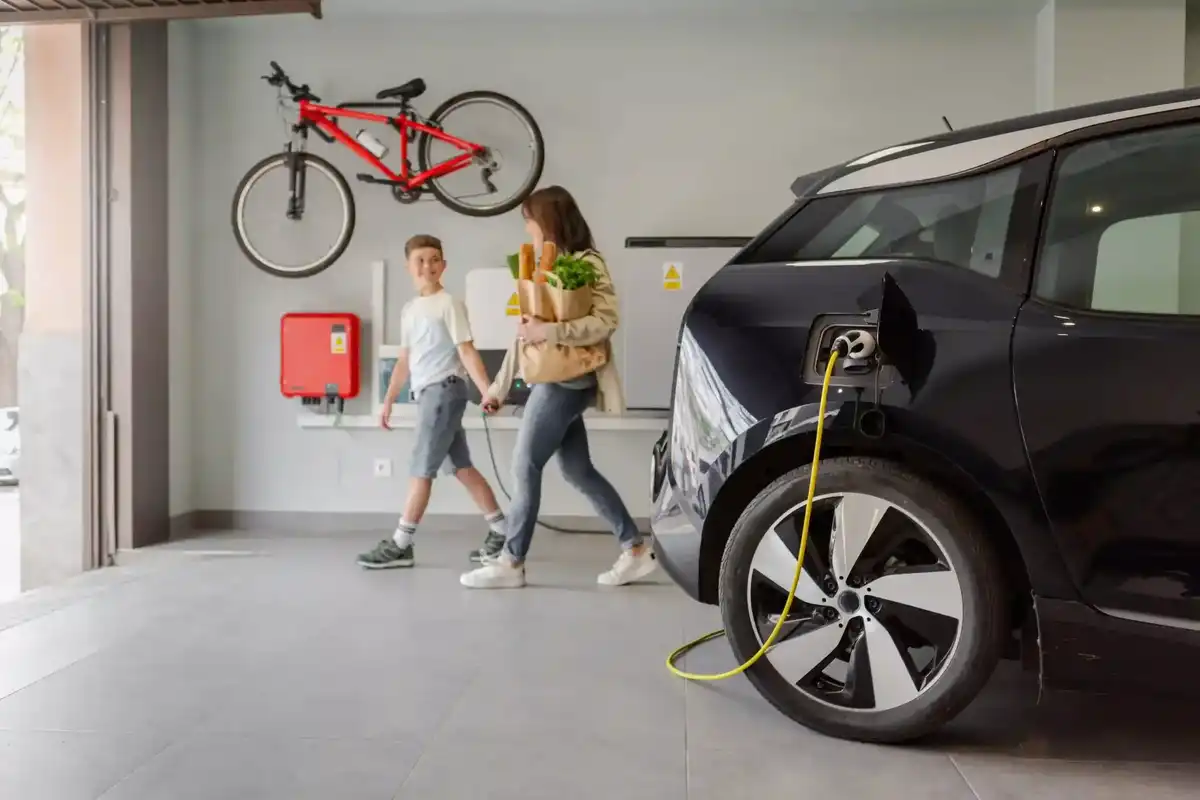Houston energy leader on why the future of fuels is more than electric vehicles
guest column
Gasoline, diesel, bunker fuel, and jet fuel. Four liquid hydrocarbons that have been powering transportation for the last 100-plus years.
Gas stations, truck stops, ports, and airport fuel terminals have been built up over the last century to make transportation easy and reliable.
These conventional fuels release Greenhouse Gases (GHG) when they are used, and governments all over the world are working on plans to shift towards cleaner fuels in an effort to lower emissions and minimize the effects of climate change.
For passenger cars, it’s clear that electricity will be the cleaner fuel type, with most countries adopting electric vehicles (EVs), and in some cases, providing their citizens with incentives to make the switch.
While many articles have been written about EVs and the benefits that come along with them, they fail to look at the transportation system as a whole.
Trucks, cargo ships, and airplanes are modes of transportation that are used every day, but they don’t often get the spotlight like EVs do.
For governments to be effective in curbing transportation-related greenhouse emissions, they must consider all forms of transportation and cleaner fuel options for them as well.
43 percent of GHG emissions comes from these modes of transportation. Therefore, using electricity to reduce GHG emissions in light duty vehicles only accounts for part of the total transportation emissions equation.
The path to cleaner fuels for these transportation modes has its challenges.
According to Ed Emmett, Fellow in Energy and Transportation Policy at the Baker Institute Center for Energy Studies (CES);
- "Airplanes cannot be realistically powered by electricity, at least not currently, and handle the same requisite freight and passenger loads"
- "The long-haul trucking industry [...] pushed back against electrification as being impractical due to the size and weight of batteries, their limited range, and the cost of adoption"
- "Shipowners have expressed reluctance to scrap existing bunker fueled ships for newer, more expensive ships, especially when other fueling options, e.g. biofuels and hydrocarbon derivatives-for fleets can be made available"
Finding low-cost, reliable, and environmentally sound fuels for the various segments of transportation is complex. As Emmett suggests in his latest article;
"Hovering over the transition to other fuels for almost every transportation mode is the question of dependability of supply. For the trucking industry, the truck stop industry must be able to adapt to new fuel requirements. For ocean shipping, ports must be able to meet the fuel needs of new ships. Airlines, air cargo carriers and airports need to be on the same page when it comes to aviation fuels. In other words, the adoption equation in transitions in transportation is not only a function of the availability and cost of the new technology but also a function of the cost of the full supply chain needed to support fuel production and delivery to the point of use. Going forward, the transportation industry is facing a dilemma: How are environmental concerns addressed while simultaneously maintaining operational efficiency and avoiding unnecessary upward cost shifts for moving goods and people? In answering that question, for the first time in history, modes of transportation may end up going in multiple different directions when it comes to the fuels each mode ultimately chooses."
This is why many forecasts predict that hydrocarbon demand will continue through 2050, despite ambitious aspirations of achieving net zero emissions by that year. The McKinsey "slow evolution" scenario has global liquid hydrocarbon demand in 2050 at 92mmb/d versus 103 mmb/d in 2023. With their "continued momentum" scenario, oil demand is 75 mmb/d. Proportionally, global oil demand related to GHG emissions from transportation would decline 11-27 percent. The global uptake of EVs is the primary driver of uncertainty around future oil demand. In all the McKinsey scenarios, the share of EVs in passenger cars sales is expected to be above 90 percent by 2050.
The Good News
Despite the relatively slow progress expected for reducing GHG emissions in the global transportation sector, there are solutions emerging that lower the carbon footprint tied to traditional petroleum-based fuels. Emmett highlights some of the methods under study, noting that "sustainable biofuels sourced from cooking oils, animal fats, and agriculture products, as well as hydrogen, methanol, ammonia, and various e-fuels are among the options being tested. Some ocean carriers are already ordering ships powered by liquified natural gas, bio-e-methanol, bio/e-methane, ammonia, and hydrogen. Airlines are already using sustainable aviation fuel as a supplement to basic aviation fuel. Railroads are testing hydrogen locomotives. The trucking industry is decarbonizing local delivery by using vehicles powered by electricity, compressed natural gas, and sustainable diesel. Long-haul trucking companies are considering sustainable diesel as a drop-in fuel for existing equipment, and fuel suppliers are researching new engines fueled by hydrogen and other alternative fuels."
Most of these options will require a combination of increased government incentives, along with advancements in technology and cost reductions.
McKinsey's "sustainable transformation" scenario, which considers potential shifts in government regulations as well as advancements in technology and cost, suggests there is moderate growth in alternative fuels alongside growth in EVs. Mckinsey projects;
- EV demand could grow to over 90 percent of total passenger car sales by 2050
- EVs to make up around 80 percent of commercial truck sales by 2050
- In aviation, low carbon fuels such as biofuels, synfuels, hydrogen and electricity are projected to grow to 49 percent by 2050.
According to McKinsey, the combination of these alternatives along with demand changes in power and chemicals could reduce global oil demand to 60 mmb/d in 2050. The shift to cleaner fuels, for modes of transportation other than EVs, is underway but the progress and adoption will take decades to achieve according to McKinsey’s forecasts.
Looking more closely at EVs, the story may not be as dire globally as it seems to be in the West. While the U.S. appears to be losing momentum on electric vehicle adoption, China is roaring ahead. New electric car registrations in China reached 8.1 million in 2023, increasing by 35 percent relative to 2022. McKinsey’s forecasts have underestimated global EV sales in the past, with China surpassing their estimates, while the U.S. lags behind. It’s clear that China is the winner in EV adoption; could they also lead the way to adopt cleaner fuels for other modes of transport? That is something governments and the transportation industry will be watching in the years ahead.
Conclusion
While we are not on a trajectory to meet the aspirations to reduce global GHG emissions in the transportation sector, there are emerging solutions that could be adopted should governments around the world decide to put in place the incentives to get there. Moving forward, the future of transportation fuels will be shaped by a mix of innovation, government policies, and what consumers want. The focus will be on ensuring that the transportation sector remains reliable, secure, and economically robust, while also reducing GHG emissions. But, decarbonizing the transportation sector is much more than just EV's – it's a broader effort that will require continued global progress in each of the multiple transportation segments.
------------
Scott Nyquist is a senior advisor at McKinsey & Company and vice chairman, Houston Energy Transition Initiative of the Greater Houston Partnership. The views expressed herein are Nyquist's own and not those of McKinsey & Company or of the Greater Houston Partnership. This article originally ran on LinkedIn on October 9, 2024.









 Air Liquide and Hyundai agreed to expand hydrogen refuelling networks, storage capacity and more at a meeting in Seoul last week. Photo courtesy Air Liquide.
Air Liquide and Hyundai agreed to expand hydrogen refuelling networks, storage capacity and more at a meeting in Seoul last week. Photo courtesy Air Liquide.
